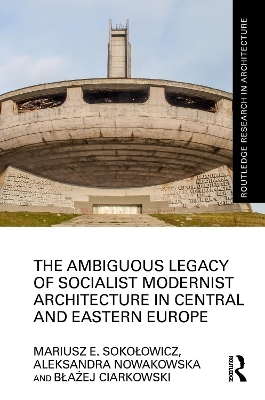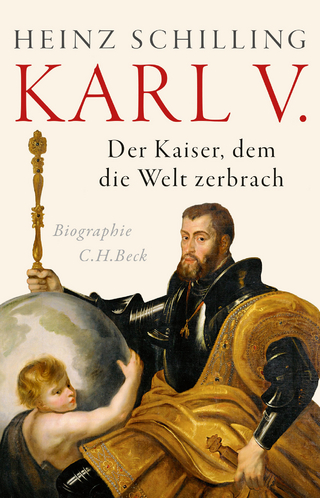
The Ambiguous Legacy of Socialist Modernist Architecture in Central and Eastern Europe
Routledge (Verlag)
978-1-032-28927-4 (ISBN)
This book examines the unique socialist-modernist architecture built in the twentieth century in Central and Eastern Europe as a source of heritage and of existing and potential value for the present and future generations. Due to the historical context in which it was created, such architecture remains ambiguous. On the one hand, the wider public associates it with the legacy of the unpleasant period of the real socialist economic regime. Yet, on the other hand, it is also a manifestation of social modernization and the promotion of a significant proportion of the population.
This book focuses particularly on concrete heritage, a legacy of modernist architecture in Central and Eastern Europe, and it was this material that enabled their rebuilding after World War II and modernization during the following decades. The authors search for the value of modernist architecture and using case studies from Poland, Bulgaria, Northern Macedonia, Lithuania and Slovenia verify to what extent this heritage is embedded in the local socio-economic milieu and becomes a basis for creating new values. They argue that the challenge is to change the ways we think about heritage, from looking at it from the point of view of a single monument to thinking in terms of a place with its own character and identity that builds its relation to history and its embeddedness in the local space. Furthermore, they propose that the preservation of existing concrete structures and adapting them to modern needs is of great importance for sustainability.
With increasing awareness of the issue of preserving post-war architectural heritage and the strategies of dissonant heritage management, this multidisciplinary study will be of interest to architecture historians, conservators, heritage economists, urban planners and architects.
Mariusz E. Sokołowicz is a scholar and urban activist, a Professor at the Faculty of Economics and Sociology, University of Lodz (Poland), and is the Chair of the Department of Regional Economics and Environment. He specializes in urban and regional studies, institutional economics, place marketing and economics of proximity. For several years, he worked as a real estate manager and advisor, as well as a local government official responsible for the town centre revitalization project. Aleksandra Nowakowska is a Professor at the University of Lodz (Poland) in the Department of Regional Economics and Environmental Protection and Head of the Institute of Urban and Regional Studies and Planning. Her main areas of scientific interest are development and local policy, innovative methods and tools for managing the development of cities, smart city and development strategies of cities and regions. Błażej Ciarkowski is an Associate Professor at the Institute of Art History, University of Lodz (Poland). He is the leader of the research team in the international project “InnovaConcrete – Innovative Materials and Techniques for the Conservation of 20th Century Concrete-based Heritage.” His research interests focus on modernist architecture, mutual relations between architecture and politics and preservation and conservation of modernist architecture.
Introduction 1 Modernism, socialism and concrete in CEE countries: A controversial heritage Modernism in architecture – Universal genesis vs CEE uniqueness Socialist modernism in architecture as part of the modernization policy in CEE countries Concrete in post-war architecture: New possibilities for a new society Soc-modernism architecture after socialism: The problem of dissonant heritage 2 The interdisciplinary character of heritage value The concept of value in philosophy and economic thought Value in the theory of monuments Architectural heritage as an urban common good Architectural heritage as a territorial capital Heritage surroundings and its value from the societal and spatial order perspective 3 Towards a methodology of valuating ambiguous heritage The review of research on valuating soc-modernist architecture Ambiguous heritage and architecture The classification of heritage valuation methods Cost-benefit analysis as a response to the complexity of heritage development Warsaw Ochota railway station, Poland – Valuating soc-modernism in the daily life 4 The protection of ambiguous legacy in CEE countries: Case studies The railway station in Katowice, Poland – From destruction to value discourse Historical background and evolution of object's functions Dominant value and impact of the surroundings Socio-economic embeddedness and local uniqueness The Buzludzha Monument, Bulgaria – The struggle of soc-modernism heritage with nature and political controversies Historical background and evolution of object's functions Dominant value and impact of the surroundings Socio-economic embeddedness and local uniqueness Central post office in Skopje – The memory of the socialist reconstruction in the process of oblivion Historical background and evolution of object's functions Dominant value and impact of the surroundings Socio-economic embeddedness and local uniqueness Palace of concerts and sports in Vilnius, Lithuania – Sports utility vs difficult history and dissonant heritage Historical background and evolution of object's functions Dominant value and impact of the surroundings Socio-economic embeddedness and local uniqueness Republic Square in Ljubljana, Slovenia – The beginnings of statehood and every day of the capital’s civic life Historical background and evolution of object's functions Dominant value and impact of the surroundings Socio-economic embeddedness and local uniqueness Summary References Index
| Erscheinungsdatum | 17.04.2023 |
|---|---|
| Reihe/Serie | Routledge Research in Architecture |
| Zusatzinfo | 12 Tables, black and white; 10 Line drawings, black and white; 40 Halftones, black and white; 50 Illustrations, black and white |
| Verlagsort | London |
| Sprache | englisch |
| Maße | 156 x 234 mm |
| Gewicht | 630 g |
| Themenwelt | Geisteswissenschaften ► Geschichte ► Regional- / Ländergeschichte |
| Naturwissenschaften ► Biologie ► Ökologie / Naturschutz | |
| Naturwissenschaften ► Geowissenschaften ► Geografie / Kartografie | |
| Sozialwissenschaften ► Soziologie ► Spezielle Soziologien | |
| Technik ► Architektur | |
| ISBN-10 | 1-032-28927-9 / 1032289279 |
| ISBN-13 | 978-1-032-28927-4 / 9781032289274 |
| Zustand | Neuware |
| Informationen gemäß Produktsicherheitsverordnung (GPSR) | |
| Haben Sie eine Frage zum Produkt? |


